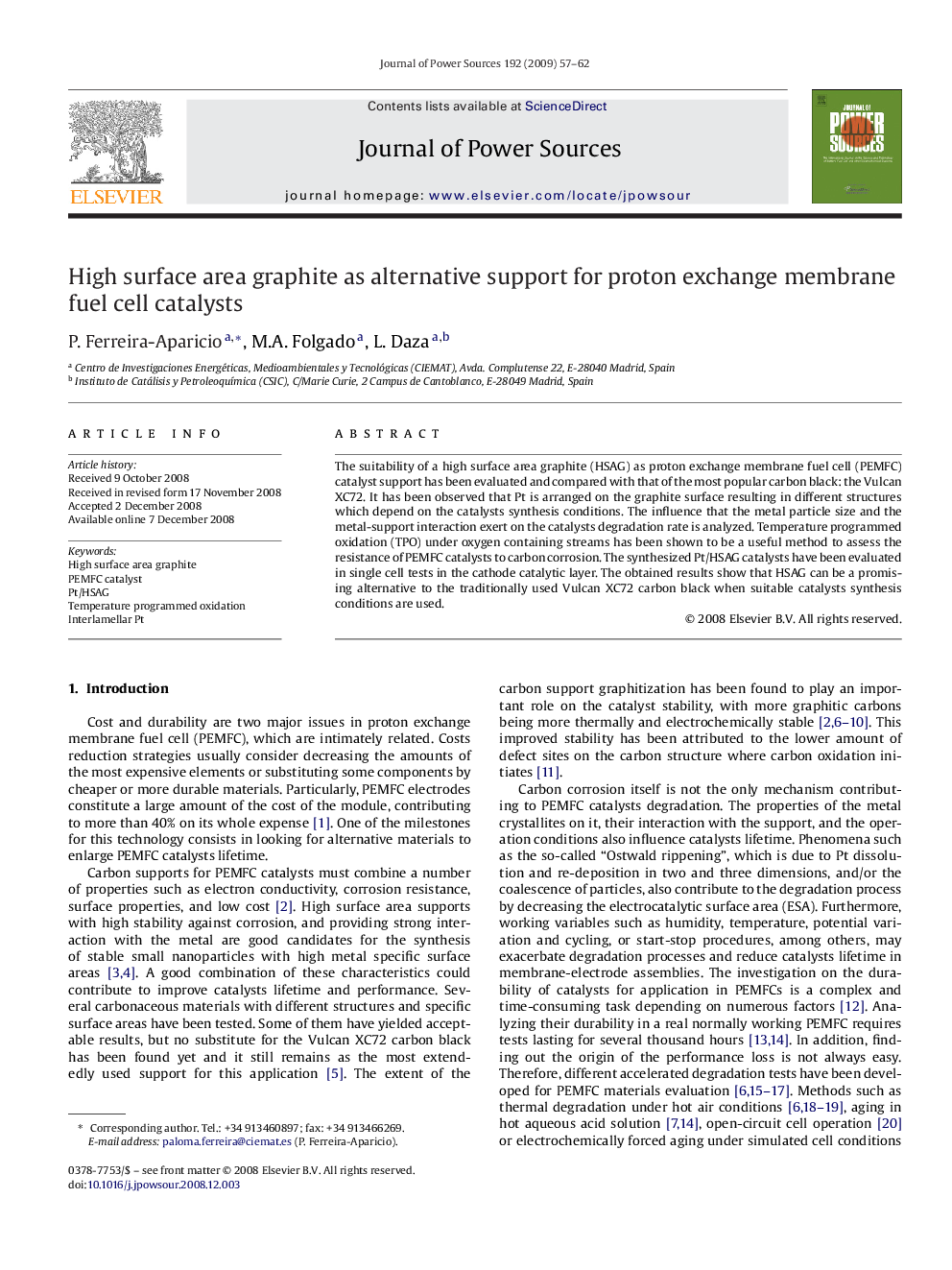| Article ID | Journal | Published Year | Pages | File Type |
|---|---|---|---|---|
| 1294197 | Journal of Power Sources | 2009 | 6 Pages |
The suitability of a high surface area graphite (HSAG) as proton exchange membrane fuel cell (PEMFC) catalyst support has been evaluated and compared with that of the most popular carbon black: the Vulcan XC72. It has been observed that Pt is arranged on the graphite surface resulting in different structures which depend on the catalysts synthesis conditions. The influence that the metal particle size and the metal-support interaction exert on the catalysts degradation rate is analyzed. Temperature programmed oxidation (TPO) under oxygen containing streams has been shown to be a useful method to assess the resistance of PEMFC catalysts to carbon corrosion. The synthesized Pt/HSAG catalysts have been evaluated in single cell tests in the cathode catalytic layer. The obtained results show that HSAG can be a promising alternative to the traditionally used Vulcan XC72 carbon black when suitable catalysts synthesis conditions are used.
